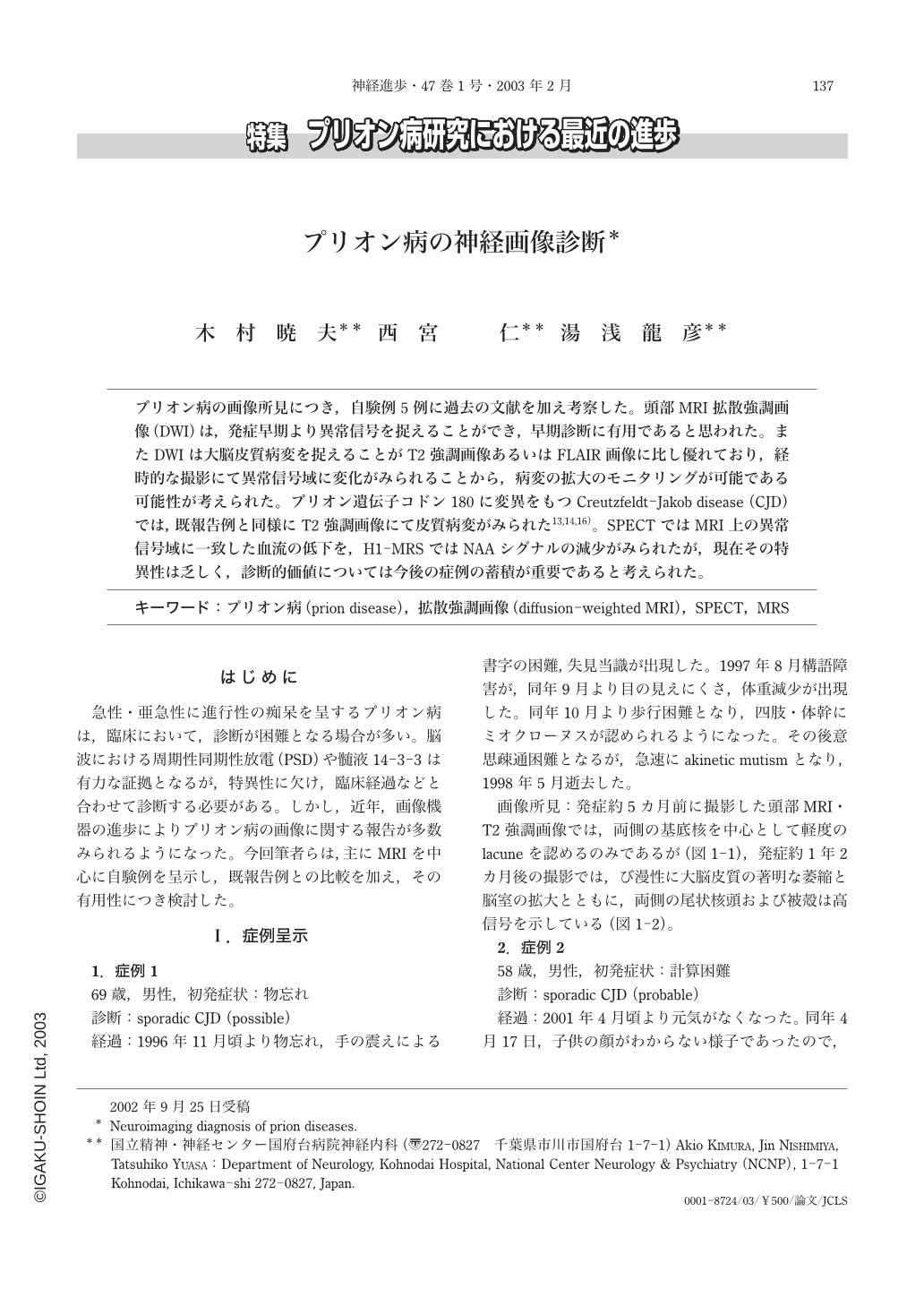Japanese
English
- 有料閲覧
- Abstract 文献概要
- 1ページ目 Look Inside
プリオン病の画像所見につき,自験例5例に過去の文献を加え考察した。頭部MRI拡散強調画像(DWI)は,発症早期より異常信号を捉えることができ,早期診断に有用であると思われた。またDWIは大脳皮質病変を捉えることがT2強調画像あるいはFLAIR画像に比し優れており,経時的な撮影にて異常信号域に変化がみられることから,病変の拡大のモニタリングが可能である可能性が考えられた。プリオン遺伝子コドン180に変異をもつCreutzfeldt-Jakob disease(CJD)では,既報告例と同様にT2強調画像にて皮質病変がみられた13, 14, 16)。SPECTではMRI上の異常信号域に一致した血流の低下を,H1-MRSではNAAシグナルの減少がみられたが,現在その特異性は乏しく,診断的価値については今後の症例の蓄積が重要であると考えられた。
はじめに
急性・亜急性に進行性の痴呆を呈するプリオン病は,臨床において,診断が困難となる場合が多い。脳波における周期性同期性放電(PSD)や髄液14-3-3は有力な証拠となるが,特異性に欠け,臨床経過などと合わせて診断する必要がある。しかし,近年,画像機器の進歩によりプリオン病の画像に関する報告が多数みられるようになった。今回筆者らは,主にMRIを中心に自験例を呈示し,既報告例との比較を加え,その有用性につき検討した。
We reported the cerebral imaging findings in 5 patients with prion disease and compared with previous reports. Diffusion-weighted MRI(DWI)proved to be particulary useful for early diagnosis of prion disease. DWI revealed abnormal hyperintense lesions particulary cerebral cortex, more sensitively than conventional MRI. DWI appears to be useful to monitor the disease because of the serial changing abnormal signal lesions with progression of the neurological findings. In the case with the point mutation of the codon 180, MRI demonstrated expansion of the high cortical signal on T2-weighted images, which was the same as previous report of the case with the point mutation of the codon 180. SPECT imaging with99mTc-ECD revealed severely decreased perfusion of the area, which MRI revealed high intensity on T2-weighted images. Proton magnetic resonance spectroscopy(H1-MRS)revealed a decrease of N-acetylaspartate signals. But these changes of SPECT and H1-MRS are not specific for prion disease. However, further investigations must be performed to determine the diagnostic value for prion disease.

Copyright © 2003, Igaku-Shoin Ltd. All rights reserved.


